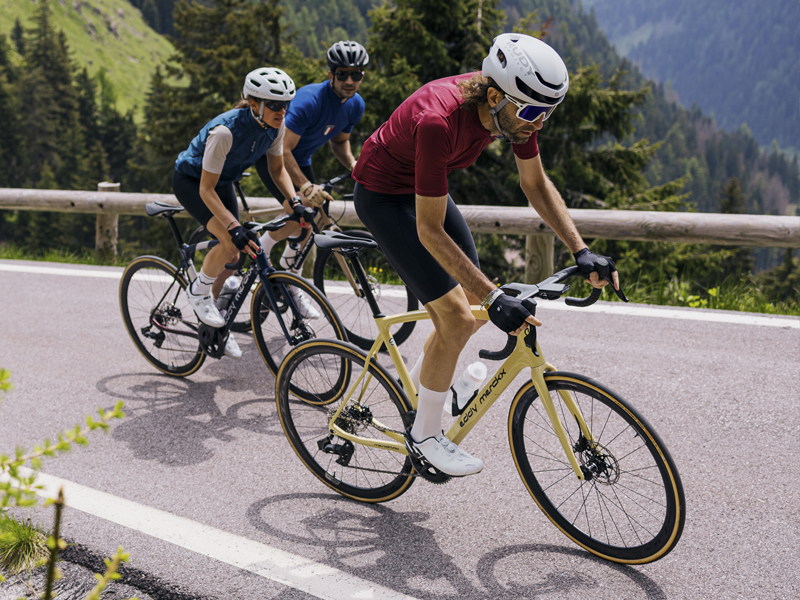When it comes to cycling, the right gear can significantly impact performance and comfort. Among the various components of cycling apparel, the fit and aerodynamics of a jersey play a crucial role in optimizing your ride. A well-fitted model will not only ensure comfort but also reduces drag, which can help cyclists achieve greater speed and efficiency.
By addressing both fit and aerodynamics, cyclists can experience less fatigue on long rides, making it easier to maintain peak performance throughout their journey. Understanding these aspects is essential for anyone looking to enhance their experience, whether on a casual ride or a competitive race.
Why fit matters: comfort and performance over long distances
A well-fitting cycling jersey is crucial for both comfort and performance, especially on long rides. The right fit minimizes friction and prevents chafing, which can be particularly uncomfortable over extended periods.
Jerseys that are too loose can create excess drag, slowing the rider down and increasing fatigue. Conversely, a jersey that is too tight may restrict movement and hinder circulation, leading to discomfort and reduced performance.
Modern cycling jerseys are designed with precision to ensure an optimal fit. They often feature ergonomic cuts and flexible materials that accommodate a cyclist’s range of motion while maintaining a streamlined profile. This balance helps in reducing resistance and enhancing overall efficiency, allowing cyclists to maintain a steady pace without unnecessary strain.
Brands like De Marchi (www.demarchi.com/en/) set a benchmark in cycling apparel, offering cycling jerseys that exemplify high standards of quality and performance. Established in 1946, the Italian company blends traditional craftsmanship with modern technology, creating jerseys that ensure an excellent fit, durability, and superior moisture management. Their commitment to innovation and detail supports both professional and amateur cyclists in achieving optimal performance and comfort.
Aerodynamics: cutting through wind resistance
Aerodynamics plays a crucial role in cycling performance, particularly at higher speeds. A cycling jersey designed with aerodynamic principles in mind can significantly reduce wind resistance, allowing cyclists to cut through the air more efficiently. This reduction in drag is essential for improving speed and maintaining momentum during a ride.
Modern cycling jerseys incorporate various design elements to enhance aerodynamics. Features such as streamlined cuts, tapered sleeves, and close-fitting materials help minimize air turbulence around the body.
Fabrics with low drag coefficients are used to ensure that the jersey adheres smoothly to the body, reducing the overall surface area that interacts with the wind. Additionally, some jerseys utilize textured fabrics or specific seam placements to further optimize airflow, making it easier for cyclists to maintain high speeds with less effort.
By prioritizing aerodynamics in jersey design, cyclists can experience a noticeable improvement in their riding efficiency, which is especially beneficial during competitive events or high-intensity rides.
The balance between compression and flexibility
Finding the right balance between compression and flexibility is vital. Compression in cycling jerseys helps enhance circulation, which can reduce muscle fatigue and improve endurance during long rides. This is achieved using specialized fabrics that apply gentle pressure to key muscle groups, aiding in blood flow and reducing the buildup of lactic acid.
However, too much compression can restrict movement, impacting overall comfort and performance. Therefore, modern cycling jerseys are engineered to provide targeted compression while allowing sufficient flexibility for a full range of motion.
This is accomplished with high-stretch materials and strategic design elements such as articulated panels and ergonomic seams. The result is a jersey that supports muscle function and minimizes fatigue without compromising on comfort or freedom of movement.
Fit customization: finding the right jersey for your riding style
Selecting the right cycling jersey involves more than just choosing a size: it requires considering how the fit aligns with your riding style and personal preferences.
For competitive cyclists or those who prioritize speed, a snug, aerodynamic fit is ideal. This type of jersey minimizes wind resistance and enhances performance during races or high-speed training sessions. Conversely, for casual riders or those focused on long-distance comfort, a slightly looser fit that allows for better airflow and flexibility might be more appropriate.
Custom options are available for cyclists seeking personalized gear. Many brands offer customization services that let you choose fabrics, colors, and designs according to your preferences. This ensures that the jersey fits perfectly while meeting both your performance needs and aesthetic desires.
Ultimately, finding the right fit involves trying on different styles and cuts to determine what works best for your riding posture and goals. By choosing a jersey that aligns with your specific needs, you can enhance your cycling experience and achieve better results on every ride.
